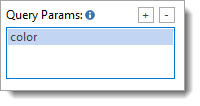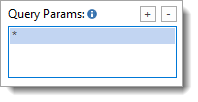Page History
404 Not Found responses are well known to just about every web surfer. It simply means that the target resource of the URI URL is not found. However, there are different reasons and different sources for the 404 error.
...
One source could be your web server itself (e.g., IIS, Apache, Abyss, etc.). This means the request was never handled by the OECGI, much less your API. You'll know if this is the case rather quickly because of the lack of activity on the API side. For example, no you do not see new logs were being generated or no message you do not see output coming from the command prompt running the OEngineServer. Finally, 404 responses Another sign that the 404 response was generated from web servers are typically a web server is to see if the content is HTML formatted whereas . 404 responses generated by the HTTP Framework return a RFC7807 standard problem+json media type response (see further below for examples).
In these cases it is most likely a configuration issue. The web server might not be routing the request to the OECGI properly. Go back through the Server Preparation steps. The URL Rewrite Rules can easily fail with just one minor typo.
...
However, it is still possible to get a 404 response even if your resource has been defined. This can happen if the URI URL includes query params that are not defined as a part of the resource:
...
| Code Block | ||
|---|---|---|
| ||
{
"type": "about:blank",
"title": "Not Found",
"status": 404,
"detail": "color is not valid for this web API endpoint.",
"instance": "http://www.examples.org/api/parts?color=red"
} |
Here are a few reasons and symptoms.
Resource endpoint is not defined in the Resource Manager.
This most likely means you forgot to select at least one HTTP method:
...
By default, the HTTP Framework treats query params as a part of the URL. Thus, if an unexpected query param appears in the URL it will consider it to be an unavailable resource. If one or more query params need to be supported then these should be defined in the Resource Manager for the specific resource:
On the other hand, if unspecified query params need to be supported or if you never want query params to be the source of a 404 error, then you can configure the resource with a wildcard query param:


